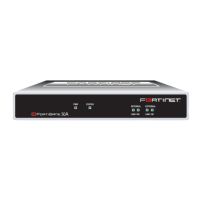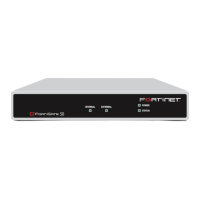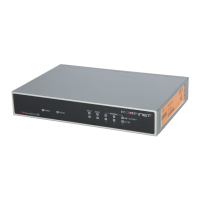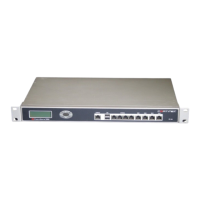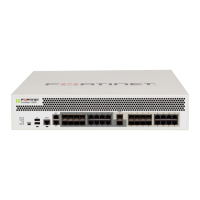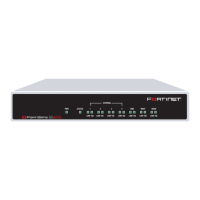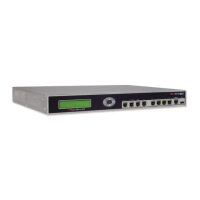System Network Interface
FortiGate Version 3.0 MR4 Administration Guide
01-30004-0203-20070102 73
Name Enter a name for the interface.
You cannot change the name of an existing interface.
Type On models 800 and higher, you can create VLAN, 802.3ad Aggregate,
and Redundant interfaces.
On models WiFi-60A and WiFi-60AM, you can create wireless interfaces
and VLAN subinterfaces.
On the 60ADSL model, you can configure an ADSL interface.
Other models support creation of VLAN interfaces only and have no
Type field.
To configure an ADSL interface, see “Configuring an ADSL interface” on
page 74.
To create a VLAN subinterface, see “FortiGate units and VLANs” on
page 96.
To create an aggregate interface, see “Creating an 802.3ad aggregate
interface” on page 75.
To create a redundant interface, see“Creating a redundant interface” on
page 76.
To create a wireless interface, see “Creating a wireless interface” on
page 77.
You cannot change the type of an existing interface.
Interface Select the name of the physical interface on which to create the VLAN.
Once created, the VLAN subinterface is listed below its physical
interface in the Interface list.
You cannot change the interface of an existing VLAN subinterface.
This field is only displayed when Type is set to VLAN.
Physical
Interface
Members
Move the interfaces to be included in the 802.3ad aggregate or
Redundant interface from the Available interfaces list to the Selected
interfaces list.
This field is only displayed when Type is set to either 802.3ad aggregate
or Redundant interface.
VLAN ID Enter the VLAN ID that matches the VLAN ID of the packets to be
received by this VLAN subinterface. You cannot change the VLAN ID of
an existing VLAN subinterface.
The VLAN ID can be any number between 1 and 4096 and must match
the VLAN ID added by the IEEE 802.1Q-compliant router or switch
connected to the VLAN subinterface. See “VLAN overview” on page 96.
This field is only displayed when Type is set to VLAN.
Virtual Domain Select the virtual domain to which this VLAN subinterface belongs.
This is available to the super admin account when virtual domain
configuration is enabled. See “Using virtual domains” on page 61.
Addressing
mode
To configure a static IP address for the interface, select Manual.
You can also configure the interface for dynamic IP address assignment.
See “Configuring DHCP on an interface” on page 78 or “Configuring an
interface for PPPoE or PPPoA” on page 80.
IP/Netmask Enter the IP address/subnet mask in the IP/Netmask field. The IP
address must be on the same subnet as the network to which the
interface connects.
Two interfaces cannot have IP addresses on the same subnet.
This field is only available when Manual addressing mode is selected.
DDNS Select DDNS to configure a Dynamic DNS service for this interface.
Additional fields are displayed. See “Configuring Dynamic DNS service
for an interface” on page 81.
Ping Server To enable dead gateway detection, enter the IP address of the next hop
router on the network connected to the interface and select Enable. See
“Dead gateway detection” on page 89.
Administrative
Access
Select the types of administrative access permitted on this interface.
HTTPS Allow secure HTTPS connections to the web-based manager through
this interface.
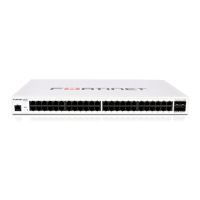
